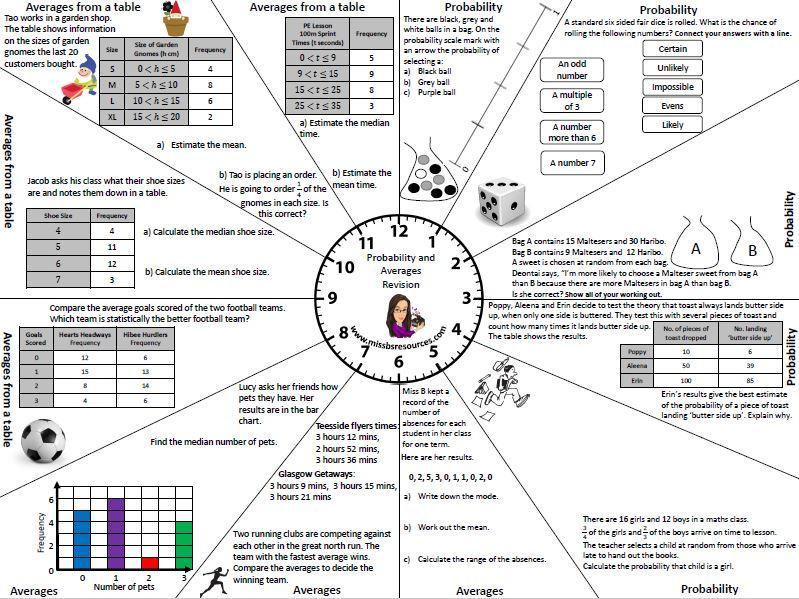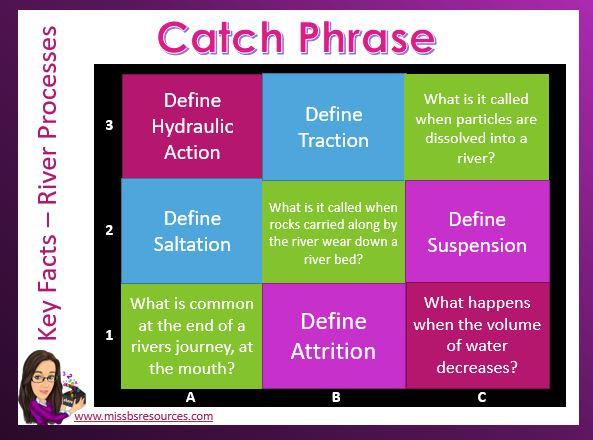Guide to Maths Revision



Revision Clocks are taking twitter by storm, I have made and completed many with my students over this past year. So below are the ones I've made without snipping questions from old maths GCSE Papers. I have lots with exam questions snipped onto them but I'm not sure about sharing them with copyright laws etc. Answers are provided in the click here option underneath a picture. I am uploading more resources and answers throughout every week in the lead up to exams.
The idea behind revision clocks is that students ether focus on random topics, a category or one specific skill within a set time frame. Usually the time frame is 60 minutes and students need to be able to pace themselves accrodingly through the GCSE style exam questions. Revision clocks are ideal for revision as it is a directed task for students which can include differentiation. It supports the students in needing to get both the basics and the complexities of examination correct. I find it best to allow students 20 minutes silent focus on the clocks, allowing them to really test their knowledge before communicating and getting help of their peers in the class on the questons they may be unsure of.
I hope you find my take on the GCSE revision clocks useful.
Miss B

Silence.
We’ve all experienced it at some point in life and we’ve probably experienced it as teachers more so than those who aren’t.
Silence.
The moment when you ask a question to a class or when training colleagues and nothing happens. Well I say nothing happens… physically in the room nothing happens. However I could swear I’ve seen tumble weed rolling around my classroom and I’ve heard several pin drops inside my head.
When I first started teaching this would often send me into a tail spin. I would either end up answering the question for the students or provide enough hints and suggestions that the students were none the wiser of the answer to the original question.

 Place keywords onto the grid and ask students to provide the definitions or vice versa. This good for when the students need to remember lots of key terms and processes. The example I’ve used for this is the river processes of erosion, transport and deposition. This method works the same for when students need to remember key formulas in science and maths.
Place keywords onto the grid and ask students to provide the definitions or vice versa. This good for when the students need to remember lots of key terms and processes. The example I’ve used for this is the river processes of erosion, transport and deposition. This method works the same for when students need to remember key formulas in science and maths.
It's been a while since I have last shared a murder mystery. So here is my Harry Potter themed murder mystery. The topic if you haven't guessed it yet is calculating the mean specifically from a table. Everybody loves a play on words, right?
This murder mystery was part of a lesson I did with my year 7's recently, I've wanted to spend the time in creating a good mean from the table lesson for a while. I started with a stopclock starter where students had to calculate the median, mode and range from lists and tables. This warmed the students up and refresh their knowledge of both grouped and ungrouped tables.
I introduced the murder mystery by asking the students to read the newspaper article which always gets a buzz in the classroom. Following this I displayed the four suspects Professor Snape, Sirus Black, Draco Malfoy and Bellatrix Lestrange. This information card also includes their individual stats.
“Miss B is always coming up with great new ideas. I have been delighted to work with her on linking numeracy and literacy”
Simon Blower

@simonpobble
Co Founder of pobble.com
“Makes Maths interesting, relevant and accessible.”
Mark Anderson

@ICTEvangelist
Author of ‘Perfect ICT Every Lesson’ and international speaker.
www.EducationEvangelist.Com
“Maths teachers looking for inspiration and quality resources? Look no further than @MissBsResources.”
Jon Tait

@Teamtait
Olympic torch bearer, deputy head teacher and international speaker.
www.edutait.co.uk